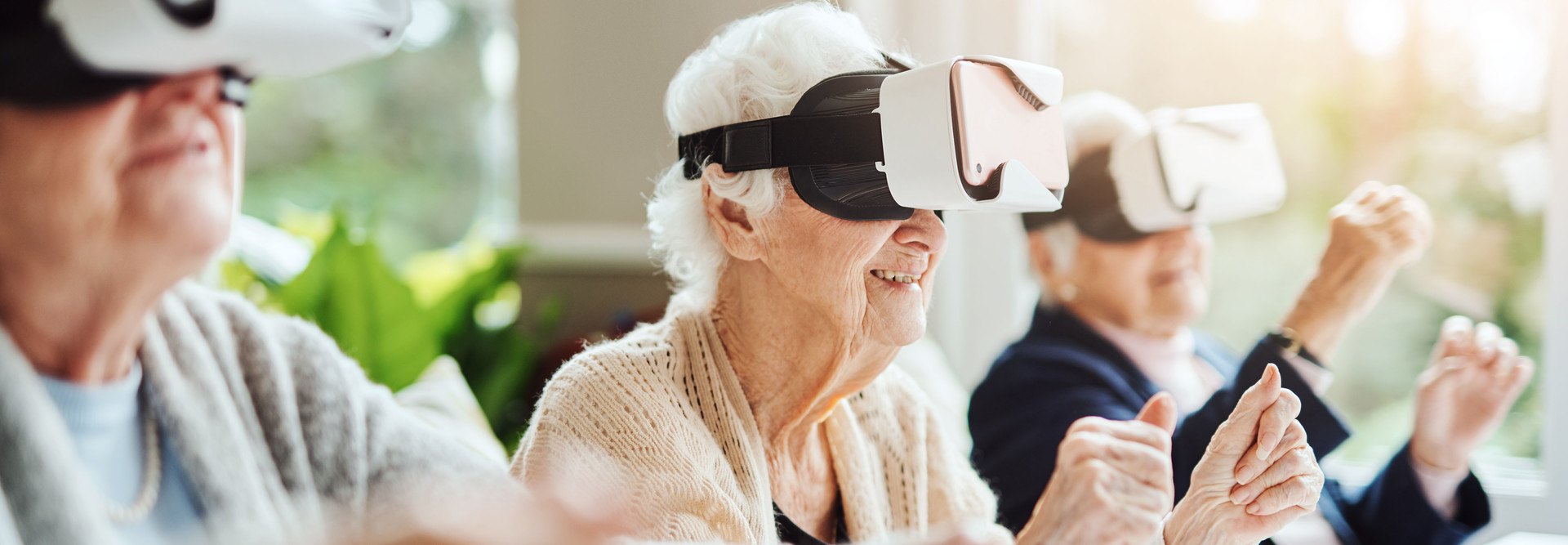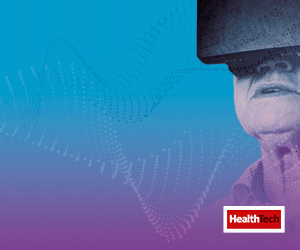“It’s part of everyday life, and we want these communities to mimic everyday life as much as possible,” Maddalena said.
The report cites a growing number of providers using this transformative technology to engage residents, stimulate memories and even nurture an understanding of different ailments.
Here are some examples I’m excited to see in action.
MORE FROM HEALTHTECH: Discover how AI is helping predict and prevent senior falls.
Care Facilities Use VR to Engage and Entertain Residents
Front Porch, a family of companies dedicated to independent and assisted living, memory care and skilled nursing, is currently exploring the use of VR in group settings as well as a way to stimulate memories, according to the CDW report.
Through focus groups, residents in various locations can participate in the same experiences using VR headsets — watching a movie, taking a trip to the Grand Canyon or taking in panoramic views from the Eiffel Tower — and have discussions afterward to foster a sense of connection.
“Not only is it really cool, but it could be meaningful in terms of giving people shared experiences and opportunities to explore,” noted Kari Olson, chief innovation and technology officer for Front Porch and president of the Front Porch Center for Innovation and Wellbeing, in the report. “We’re working hard to figure out how we build this tool in the fabric of what we offer.”
VR technology is also being tested in care facilities by Rendever Health, a startup focused on creating a research-driven VR platform for older adult care to improve quality of life.
The company partnered with Landmark at Longwood in Boston, where the residents, wearing Samsung Gear VR headsets, were able to take trips across the solar system and paint from Vincent van Gogh’s viewpoint.
“We started to notice once they were done with the demo, they would go back to their friends at their table and talk about what they experienced. It was social, it lit a spark,” Reed Hayes, a Rendever Health co-founder, told The Boston Globe. “Can you imagine coming up with a new conversation after being there for 10 years and you haven’t been out?”
Even better, a Rendever survey of older adults using the VR tools found a 40 percent increase in happiness.
VIDEO: Watch to learn how innovations can enhance senior care.
Pennsylvania Facility Hopes to Improve Empathy Through VR
Not all implementations of VR technology in care facilities are aimed at residents, however. Consider the plans for two VR room installations at Friendship Village of South Hills, a Lifespace Communities continuing care retirement community in Upper St. Clair, Pa.
The rooms let visitors experience what life is like for people with Alzheimer’s disease, and will be open to all Lifespace team members, residents from any level of living and outside community members in an effort to build empathy and understanding for Alzheimer’s patients, Sarah Hamm, Lifespace Communities’ senior vice president of successful aging and health services, told CDW.
I’m pleased to see more implementation of VR technology in older adult living facilities because of its potential to positively impact everyone involved. This is only the beginning.
This article is part of HealthTech’s MonITor blog series. Please join the discussion on Twitter by using #WellnessIT.












